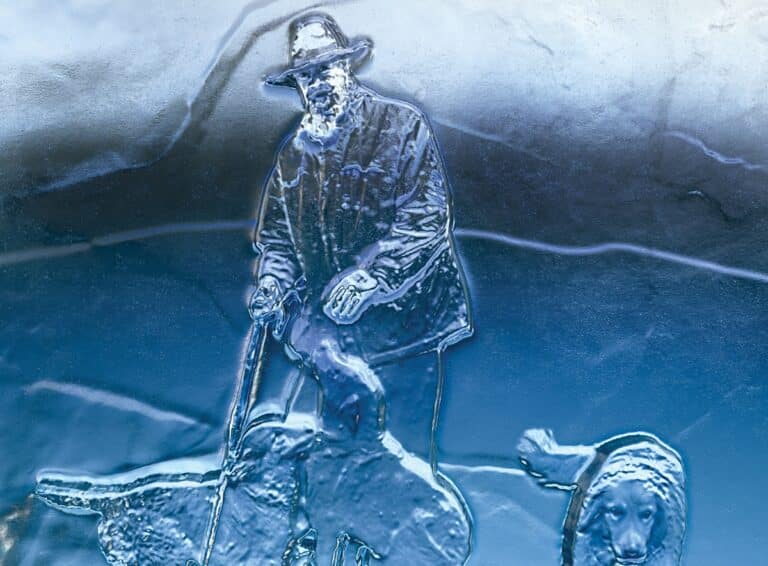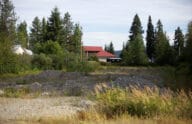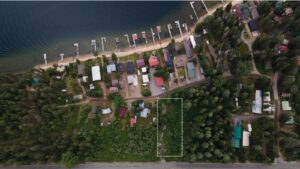Meet Clean Water Act criminals

When environmentalists celebrate the 50-year impact of the Clean Water Act, they talk about what the law means for animals and plant life. The CWA, they say, has helped fish, birds, and turtles thrive in America’s waterways.
“All this magnificent life”—meaning, non-human life—“is now in jeopardy” because of Pacific Legal Foundation’s Sackett v. EPA case, The New Republic complained.
First, that’s simply not true: Sackett v. EPA is not about the quality of America’s waterways. It’s about the government preventing housing on land that is otherwise buildable. It’s about executive overreach. If the Sacketts are allowed to build a home in their Idaho subdivision, it won’t affect the salmon of Seattle or shorebirds of Long Island. (It won’t even affect Priest Lake, which is 300 feet away, because there’s no water flowing from the Sacketts’ property to the lake!)
Second, there’s another kind of “magnificent life” that’s been impacted by the Clean Water Act over the past 50 years: human life.
As one former EPA official told us in an interview, Section 404 of the Clean Water Act—which requires a permit if you’re filling “navigable waters” with dirt or sand and is at the heart of the Sackett case—isn’t targeting industrial polluters. Unlike other sections of the Clean Water Act, Section 404 primarily targets individuals.
“And it was okay when you were regulating DuPont or General Motors,” the former official, who left the EPA 20 years ago, said. “But when you regulate the thousand-acre farm or the 5,000-acre farm, or the individual homebuilder who’s building a couple houses on a lot—I mean, that’s when it gets very politically controversial.”
Despite rising concerns on the left about overcriminalization, unjust financial penalties, incarceration, and civil asset forfeiture, progressive groups don’t seem to care that farmers and homeowners have been harassed, fined, threatened, robbed of their property rights, and even jailed by the government under the Clean Water Act.
But anyone who talks about the impact of the Clean Water Act should know these human stories.
Father and son jailed in Florida
In 1986, father and son team Ocie and Carey Mills were preparing a quarter-acre lot near Pensacola to build a fishing cabin. While spreading clean sand, they were visited by an official from the Army Corps of Engineers (which has overlapping jurisdiction with the EPA) who told them they were filling a wetland and had to stop.
The Millses consulted with a state agency, which gave them the okay to keep working. But the Corps had them arrested and indicted for violating the Clean Water Act.
The father and son spent 18 months in federal prison.
After the Millses were released, they were ordered to restore the wetlands. They tried, but the Corps hauled them back into court, saying they hadn’t removed enough sand. This time, Ocie and Carey convinced a new federal judge to visit the property.
Incredibly, once the judge visited the property, he said he didn’t think the property was actually a wetland to begin with! In a 1993 opinion, the judge wrote,
This case presents the disturbing implications of the expansive jurisdiction which has been assumed by the United States Army Corps of Engineers under the Clean Water Act. In a reversal of terms that is worthy of Alice in Wonderland, the regulatory hydra which emerged from the Clean Water Act mandates in this case that a landowner who places clean fill dirt on a plot of subdivided dry land may be imprisoned for the statutory felony offense of “discharging pollutants into the navigable waters of the United States.”
At this point, PLF joined the fray and tried unsuccessfully to have the Millses’ convictions reversed by the Eleventh Circuit Court of Appeals. The court said it was too late.
Several years later, Pacific Legal Foundation vice president Jim Burling ran into the prosecutor from Ocie and Carey’s case at an environmental law conference. Jim, who’s never one to mince words, remembers their encounter:
I asked him, “With all due respect, after what you did to Ocie and Carey Mills, how can you sleep at night?” He laughed, and said, “My wife asks me the same thing.” And then he continued to explain how Ocie and Carey’s belief in their property rights was just too old-fashioned, and they needed to adjust their thinking to modern times.
Maine retiree locked in eight-year legal battle
Gaston Roberge had his fair share of trials and tribulations long before his legal battle against the government even began.
After surviving three heart attacks, chemotherapy, and losing sight in one of his eyes, the New England businessman decided it was time to retire. In 1986, with medical bills still piling up, he and his wife Monique planned to sell their empty 2.8-acre lot in Old Orchard Beach, Maine, near where they once ran a motel. The proceeds from the sale would help fund Gaston’s medical bills and retirement.
The couple’s plans would have to wait, however, as they would spend the next eight years (and thousands of dollars in legal fees) fighting the government.
For years, Gaston had an arrangement with the town where they paid him to dump clean fill—rock, brick, ceramics, concrete, and asphalt paving fragments—on his land. Gaston never imagined this agreement would set off any red flags with the federal government. But right after a developer offered Gaston $440,000 for the property, the Army Corps of Engineers came out of the woodwork claiming that his plot of land was a wetland protected by Section 404 of the Clean Water Act. Gaston had no idea his land was considered a wetland. The government didn’t care. Army Corps officials asserted that because he had allowed the town to deposit clean fill on the land, he was guilty of illegally filling a wetland without a permit—an offense often accompanied by astronomically high fines.
Gaston wasn’t a polluter. He wasn’t big industry. The fill dumped on his land wasn’t even his. Why was the government ruthlessly going after an aging ex-motel owner in Maine?
To say Gaston and Monique were shocked would be an understatement. Suddenly they’d found themselves accused of violating a federal environmental law that was completely unknown to them. Worse, the buyer who’d offered them $440,000 withdrew the offer, frightened away. Instead of a nest egg, the Roberges were stuck with an empty lot they couldn’t sell.
For the next eight years, Gaston battled the Army Corps in court. The government had effectively taken his property and left him with nothing, violating the Fifth Amendment (which says the government cannot take private property without just compensation). And for what? Gaston wasn’t a polluter. He wasn’t big industry. The fill dumped on his land wasn’t even his. Why was the government ruthlessly going after an aging ex-motel owner in Maine?
The chilling answer appeared when a government memo came to light in the discovery phase of the case: An Army Corps official wrote, “Roberge would be a good one to squash and set an example—Old Orchard is heating up these days.”
In other words, the government’s actions weren’t about Gaston Roberge at all. In fact, the Corps was eventually forced to acknowledge that Gaston’s lot didn’t even contain wetlands.
The government’s primary motive was to hit back against property development on the Maine coast, and it didn’t care that it was running roughshod over an innocent man to do it. In 1994, the government finally settled with Gaston, who was then 81 years old, for $338,000.
Meanwhile, the Corps official who’d suggested making an example out of Gaston kept his position of power—although his supervisors did require him to attend a sensitivity course.
Veteran in Montana loses 18 months
Joe Robertson was an elderly veteran of the U.S. Navy. He and his wife, Carri, lived deep in the Montana woods right at the edge of a dense forest. A breathtakingly beautiful backdrop to build a home, it was also prone to devastating wildfires that threatened property and lives.
The Robertsons ran a firefighting truck support business and knew how essential it was to have a nearby water supply if they wanted to protect your home and surrounding forest area from fire. But because they were deep in the forest, the Robertsons didn’t have a robust water supply: The nearest source was a foot-wide, foot-deep nameless channel that flowed through a clearing close to their home. It wouldn’t be enough to fill firetrucks in the event of a fire close to the Robertsons’ home—so Joe dug some small water supply ponds around the channel that could fill several trucks.
Now: Unlike Gaston Roberge or Mike and Chantell Sackett, Joe Robertson didn’t live near an ocean, lake, or river. He was deep in the Montana forest. The small channel Joe dug around was more than 40 miles away from the closest river.
But the government showed up. The EPA claimed the small channel was a federally protected “navigable water” and that Joe had violated the law when he dug the ponds without first getting a permit. Officials also claimed that some of the ponds crossed over onto government land.
Joe didn’t get off easy: In 2017 the government slapped him with criminal charges. He was found guilty, fined $130,000, and sentenced to serve 18 months in prison. He was 77 years old at the time.
Pacific Legal Foundation asked the Supreme Court to review Joe’s conviction. Before the Court could respond, however, Joe passed away. He was still technically on parole when he died and had spent most of his last two years in prison.
One month later the Supreme Court responded by immediately remanding the case to the Ninth Circuit. Joe’s widow, Carri, became PLF’s client in the case.
The Ninth Circuit vacated Joe’s conviction and $130,000 fine. The court even ordered the government to pay back Carri the amount Joe had already paid in restitution.
It was a legal victory—but one that was bittersweet for Carri, who’d lost precious time with her husband during his final years.
Surely, sending an elderly man to prison for protecting his land was not a good use of government resources. In his own way, Joe was being a responsible steward of the environment: He was trying to ensure wildfire didn’t destroy acres of remote Montana forest.
But instead of working with him, the government punished him.
Welder threatened in Wyoming
Andy Johnson is a welder with the United Steelworkers Union. He and his wife wanted to raise livestock—steer and horses—on the nine acres where they live with their four daughters in Fort Bridger, Wyoming. To provide the livestock with water, Andy decided to build a stock pond: a small manmade pond for watering animals.
His local State Engineers Department approved of the plan: “They came out to our property and examined and surveyed the land,” Andy remembers. “They were excited about the project and said our property was a perfect place for a pond.” The engineers also told Andy that there were “literally thousands” of stock ponds throughout Wyoming.
After getting the proper permit, Andy and his wife spent a year saving up enough money for the project, then another six months constructing the pond.
“We had invested a lot of time and money into the pond,” Andy says. “Our main goal was to provide a safe place for our livestock to drink and a place for our kids to play.”
Then Andy got a phone call.
A neighbor had informed the federal government about the project. Even though Andy had a permit, and even though the Clean Water Act expressly exempts stock ponds from Section 404, the Army Corps of Engineers said they needed to inspect the property. Then the EPA came and did a second inspection. When the EPA official spoke to Andy, he said he wasn’t sure yet if the stock pond was in violation, “but we would have to spend a lot of money and prove that we were not,” Andy remembers. “Everything about that man and the EPA felt wrong.”
Soon Andy received an EPA compliance order demanding that he hire a consultant and put together a plan to rip out the pond and restore the property. If Andy didn’t comply, he’d face possible criminal charges and civil fines of $37,500 per day.
“We were shocked and devastated,” Andy says.
With Pacific Legal Foundation’s help, Andy sued—and the EPA eventually settled, agreeing to drop the fines and charges as long as Andy planted willows around the pond.
If the EPA treated property owners like Andy as partners instead of criminals—if officials had asked Andy to plant willows from the beginning instead of threatening him—Andy’s family would have been saved two years of anxiety and litigation, and the EPA could have focused its taxpayer-funded budget on actual polluters.
A better way
The environment is worth protecting. That’s why it’s such a shame the EPA has chosen to villainize individual property owners who are perfectly situated to partner with the agency and take on the responsibility of private conservation.
Contrary to what activists and the government may believe, voluntary environmentalism is not just a pipedream.
For example: After the beaver population in Oregon waned, endangering plant life that relied on beaver dams for sufficient water, a small group of ranchers banded together to protect the land by creating artificial dams. Not only did land conditions improve, but native fish and bird populations were also restored.
Unfortunately, the government ended up penalizing this group of ranchers, forcing them to pay fines and get permits for work they’d already done—essentially punishing them for their voluntary conservation.
This villainization of private property owners isn’t rational. In fact, according to researchers with the Center for Conservation Innovation (a project of Defenders of Wildlife), 80% of the country’s most richly biodiverse habitats are on private property—despite the fact that, if you add up federal and state landownership, the government owns over a third of the country’s land.
If governments at all levels worked with individual landowners like Joe Robertson, Andy Johnson, and the small group of Oregon ranchers, just imagine what could be accomplished.
Instead, the government is disincentivizing private responsibility and turning would-be partners into criminals.







